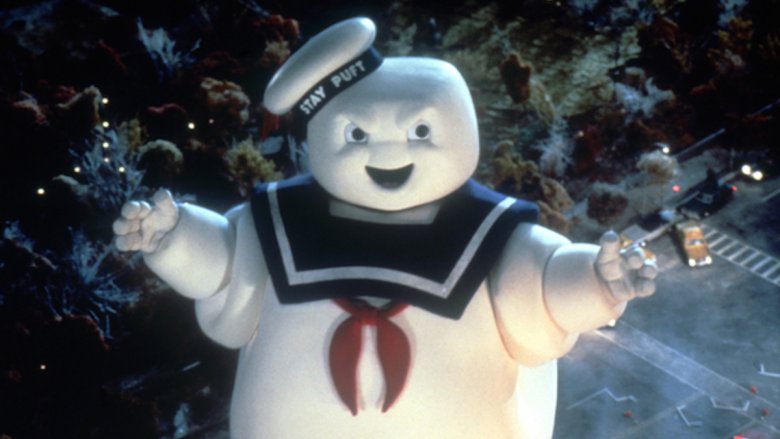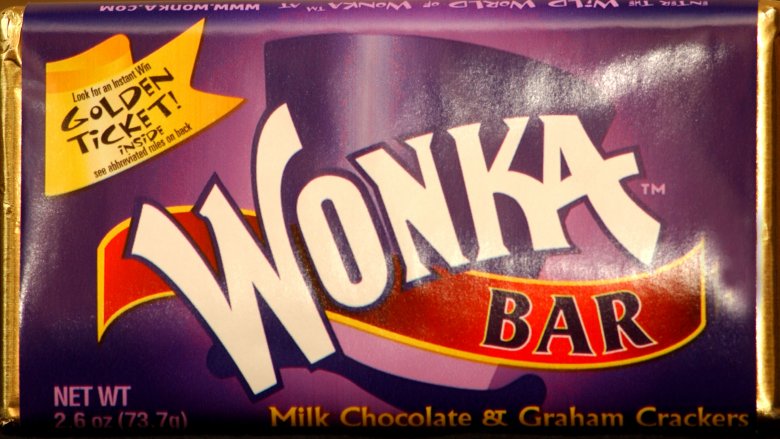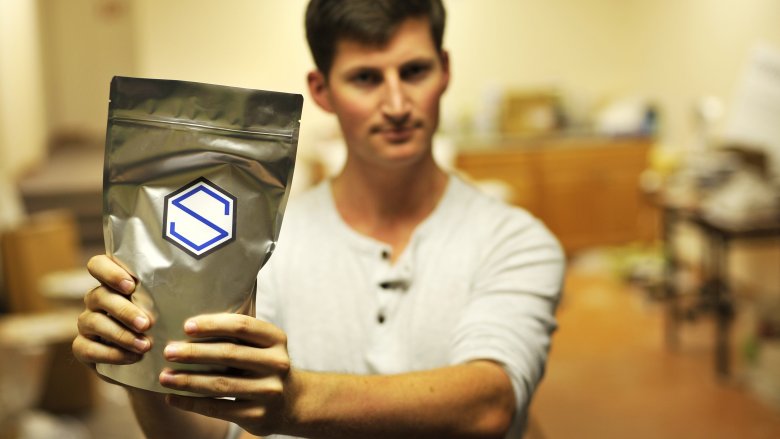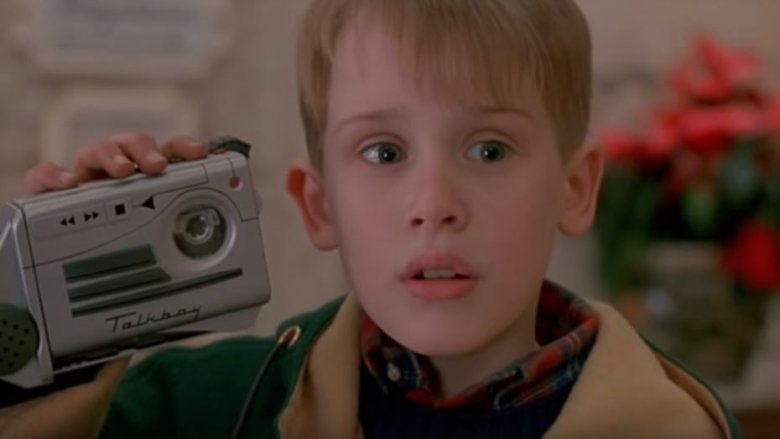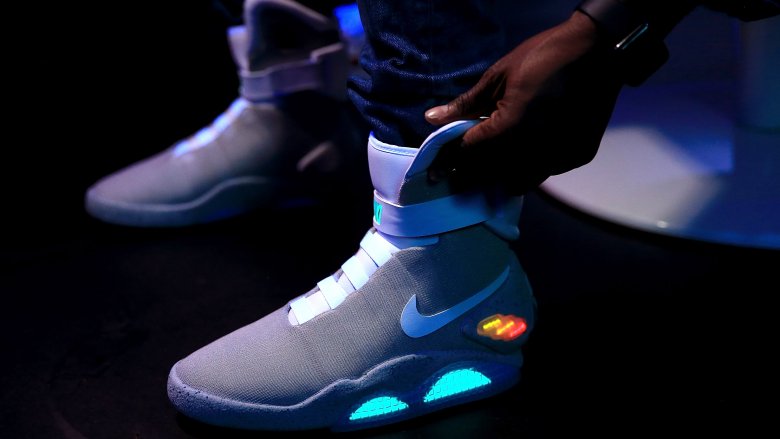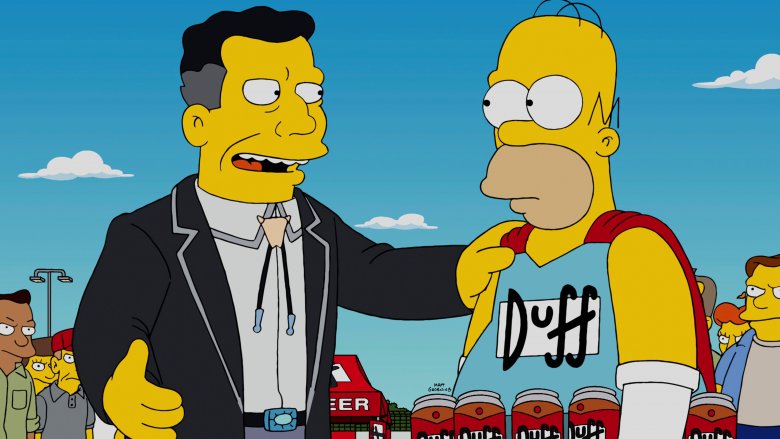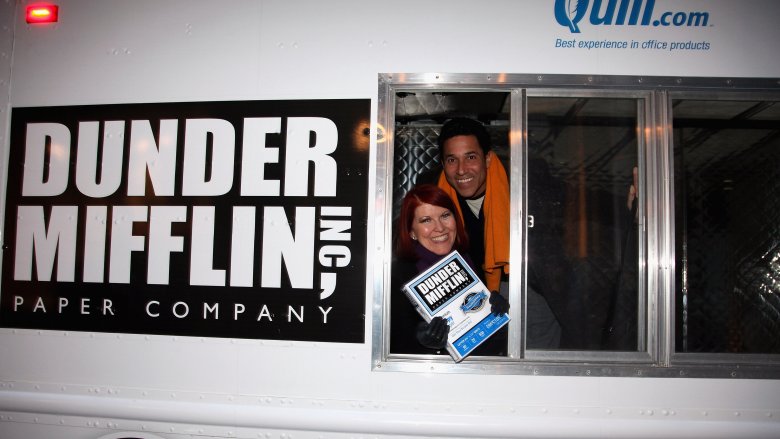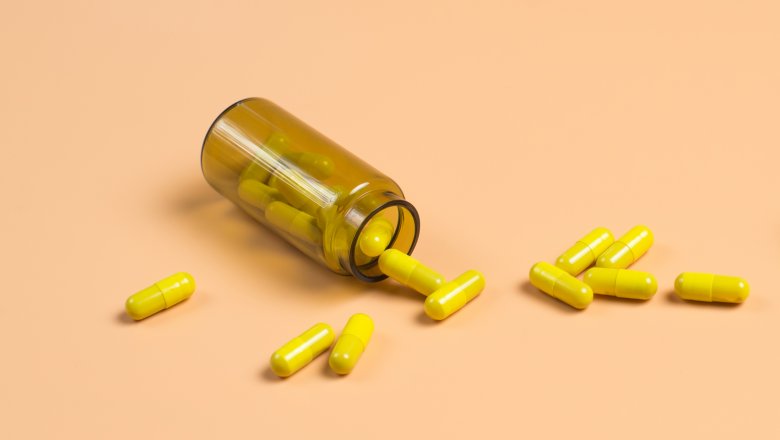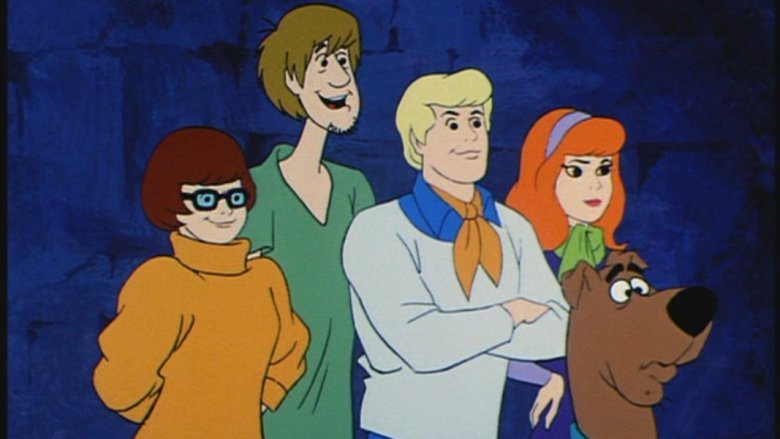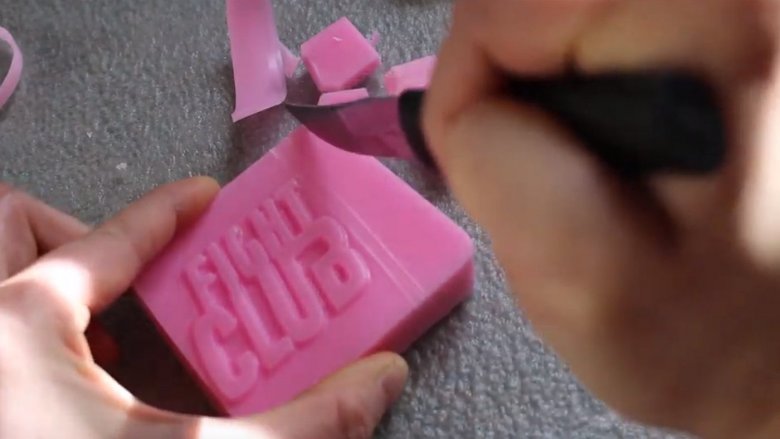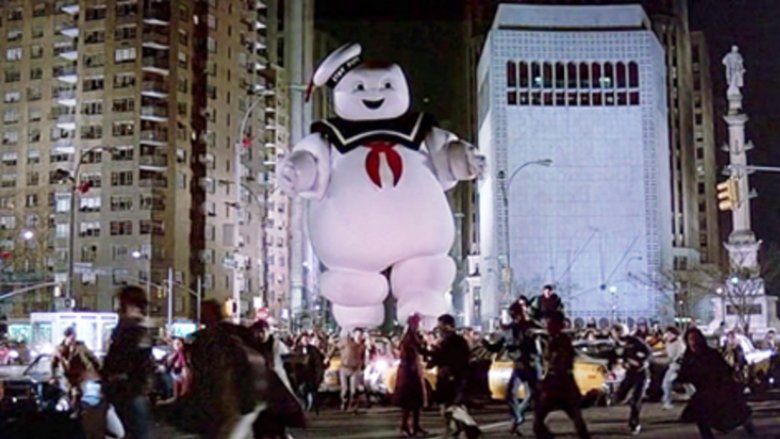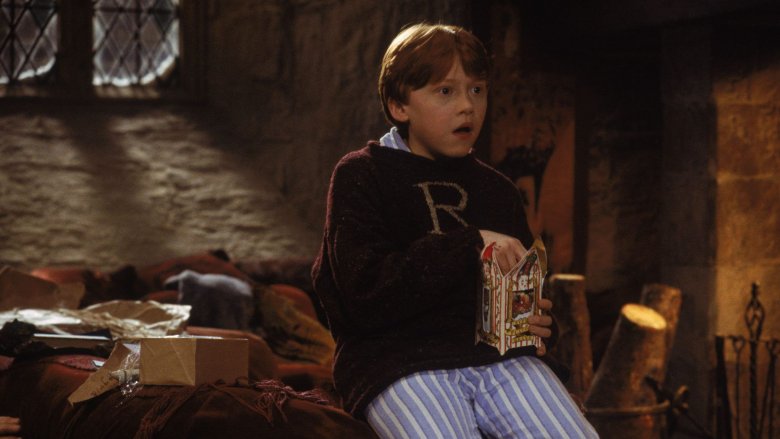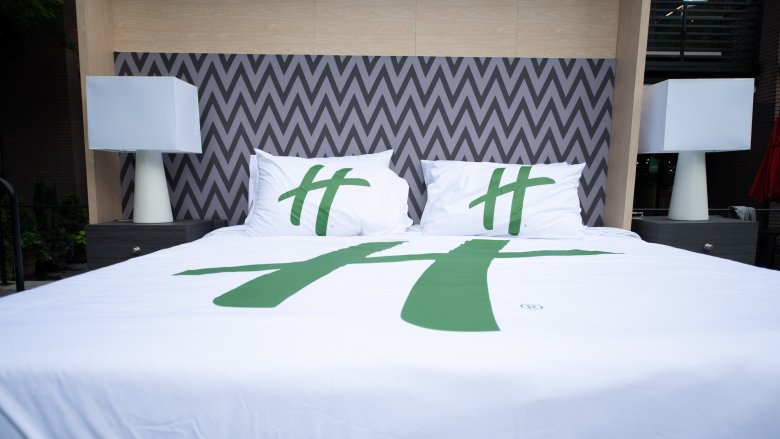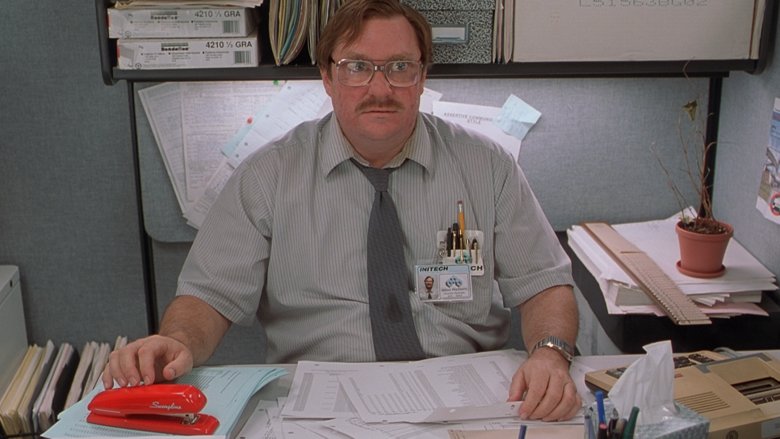Fictional Products From Pop Culture That Became Real
We may receive a commission on purchases made from links.
If you're writing the screenplay for a dystopian science fiction flick about a fast food chain planting flesh-rotting diseases in their hamburgers, it might be a grand metaphor for the not-so-savory ingredients that McDonald's puts in their food ... but you better come up with your own name for the restaurant. After all, nothing stifles creative freedom like a bunch of corporate lawyers jumping down your throat.
Companies naturally prefer to have their products presented in a glowing, positive light, rather than smeared across the screen, and that's one reason books, movies, comics, and TV shows often make up new brands and products from scratch. On the other hand, sometimes the plot requires a product that hasn't been invented yet — like a self-lacing sneaker — so the writers get creative. The weirdest twist of all is when these fictional products become so popular that they make the jump into real life, and that's happened a lot more than you might realize.
Willy Wonka couldn't be prouder
Candy is bad for the teeth and even worse for the body, but children love it. No surprise, then, that Roald Dahl's fantastical and oddly morbid children's book Charlie and the Chocolate Factory has spawned not only two major film adaptations, but the exact same candy company depicted in the book. Sure, there's no real Willy Wonka and no chocolate waterfalls in sight, but when Chicago-based sweets maker Breaker Confections first launched the official Willy Wonka Candy Company in 1971, according to Christian Science Monitor, it gave kids around the world the chance to sample real versions of Dahl's quirky fictional treats, including Everlasting Gobstoppers and those legendary Wonka Bars. Though the company was certainly created to capitalize on the success of the Gene Wilder film, it had some long legs: For over 40 years, Wonka kept putting out new lines of candy, such as Nerds, Pixy Stix, and SweeTarts, to the point that Brandchannel hailed them as the "Greatest Reverse Product Placement Ever."
In the last 1980s, Wonka got so big that candy giant Nestlé scooped it up, and sadly, it seems that Nestlé has become the real-life Mr. Slugworth to Wonka's candy empire. In 2017, Refinery29 reported that all of Wonka's most popular candy products were being folded into the Nestlé Candy Shop brand, rendering the Wonka brand obsolete. Where's Charlie when you need him?
Soylent is not people!
The idea of overpopulation has scared humans for centuries, so in 1966 author Harry Harrison wrote the dystopian epic Make Room! Make Room!, depicting a world so overcrowded that the only food anybody eats is mass-produced grossness called soylent, made of soy and lentil beans. Appealing, huh? This book was adapted into the 1973 thriller Soylent Green starring Charlton Heston. Even if you haven't watched the movie, you probably know the factory farming plot twist — but if not we're proud to spoil a four-decade-old movie for you: Soylent Green is people!
Well, enter the 2010s, and while overpopulation somehow still hasn't reached Harrison levels, Soylent is now a real product, minus the cannibalistic overtones. Today's Soylent is the brainchild of young software engineer Rob Rhinehart, and while he cheekily borrowed the name for his soy-derived product from Harrison's book, the backstory is slightly different. Like most millennials, Rhinehart was stressed about how much time and money he spent on food, so according to Vice he decided to create a colorless, flavorless cocktail combining all the nutrients you'd get in a balanced diet with none of the bad stuff. None of the pleasures either, but hey. Rhinehart took his "food" to market with the goal of tackling world hunger by creating a cheap, healthy product that might not be particularly tasty but does what you need it to.
It's the perfect gift for the utilitarian in your life.
Home (not Alone) with the Talkboy
Everybody fondly looks back on the original Home Alone, the film that first introduced the deadly killer from the Saw movies in a family-friendly vehicle. For some reason, Home Alone's sequel is far less talked about today.
However, back when Home Alone 2: Lost in New York first came out, the thing all the kids went crazy about was Kevin's "Talkboy" device, a miniature, personalized tape recorder with crazy features like a slow-motion voice changer that allowed Kevin to sound like an adult. The product had been dreamed up by the film's screenwriter, John Hughes, but once the credits rolled, the Lincoln-Star Journal says a letter-writing campaign demanding a real Talkboy grew so intense that a real product seemed like a good idea. So in 1993, Tiger Electronics worked with the studio and used cutting edge technology to develop a real version of the fictional recording toy, putting it on store shelves for $29.99. The Seattle Times wrote that Talkboys flew off the shelves.
Marty McFly's futuristic Nikes
Back to the Future II made a lot of predictions about the year 2015 that never came true. Flying cars still haven't overtaken the skies, vehicles don't run on garbage, and lawyers haven't been abolished. Flat screens and Skype are real, though, and thanks to Nike, so are those slick, LED-glowing sneakers that lace themselves up when you step inside.
Nike MAGs – near-perfect, limited-release replicas of the self-lacing sneakers worn by Marty McFly in the movie — were developed in 2011. It wasn't cheap to produce such a high-tech sneaker, and it's not cheap to buy a pair either, considering the starting price was $15,000. All net proceeds were donated to the Michael J. Fox Foundation to help create new treatments for Parkinson's disease. A few years later, when the movie's future date became the present day, Nike released a new edition of the MAG and auctioned it off. Cool as the self-lacing mechanism might be, don't count on ever trying it out yourself, unless you plan on time traveling to a utopian, moneyless future.
Drink more Duff
Considering how long The Simpsons has been around, you'd think every gas station in America would sell six-packs of Duff somewhere between the Corona and Fat Tire. Oddly enough, Homer's favorite beverage has largely remained in the cartoon world, and according to the Telegraph, that's mainly because creator Matt Groening was worried that making Duff into a real beer product would encourage minors to drink. In a strange twist of fate, though, the vacuum of an official, licensed Duff product created a popular, unofficial Duff alternate ... in South America and Australia. In Chile, in particular, the market for unauthorized Duff beer became so huge that 21st Century Fox, which owns the Simpsons brand, filed an intellectual property complaint resulting in Chilean police seizing thousands of Duff beer bottles. Fox finally decided to license the Duff trademark to create an actual line of Duff beer, which is apparently a very refreshing premium lager sold only in Chile.
While there are no plans to market Duff in the United States, the Tampa Bay Times says a different version is available at the Springfield attraction in Universal Orlando, so there's that. Otherwise, it looks like Simpsons fans looking for the "real" Duff will just have to get a ticket to Santiago.
Paper that Michael Scott would approve of
No matter how many times you've binge-watched The Office, the antics of Michael Scott probably didn't do a lot to make you want to buy Dunder Mifflin paper. To be honest, printer paper isn't the kind of product people get too excited about to begin with: If it's white, clear, and prints well, who cares?
Then again, maybe a lot of people do because thanks to The Office becoming a cultural phenomenon, Dunder Mifflin paper is now a real product, according to Time. While it's unlikely that Dunder Mifflin paper is anything too spectacular — after all, wouldn't that go against the spirit of the show? — it is sold as 20 pounds of "100% fun," 92 bright paper. Not bad, right? In a funny twist, the first ad for the real Dunder Mifflin paper aired during the series finale of The Office, according to Adweek, a gimmick that's postmodern on a level that surpasses even the show that inspired it.
Soma is real
Apparently, depressing dystopias have become a source of inspiration to marketers everywhere. Either that or weird naming accidents occur a little too often. Case in point? How about Aldous Huxley's Brave New World, a 1932 novel which contains horrifying parallels to the world today, according to the Conversation. What sets Brave New World apart from Orwell, Zamyatin, and so on is Huxley's depiction of a society dominated not by fear, but instead by prescribed chemical happiness. The drug of choice, in Huxley's universe, is a little joy-inducing pill called Soma. Now, acknowledging the prescience of Huxley's vision is common discourse for literary students across the world, but here's a weird wrinkle that even most Huxley scholars and paranoid doomsayers might not be aware of: Soma is sort of real.
"SOMA" is the brand name of a drug called carisoprodol, according to RxList, a muscle-relaxant first approved by the FDA in 1996 and owned by Royce Laboratories. Carisoprodol has been around since 1955, according to Huxley.net, and it was originally marketed as an anti-anxiety agent called Miltown. While the real SOMA isn't as powerful as its fictional equivalent, it did inspire the classic Rolling Stones song "Mother's Little Helper," which includes lyrics about little yellow pills helping Mother calm down and get through the day.
Want a Scooby snack?
Every canine loves a nice treat, and a big ol' great Dane like Scooby Doo is no exception. In the animated world, Scooby loves his Scooby Snacks, which are so good that even his owner Shaggy leaps at them sometimes. Then again, Shaggy eats almost anything, so maybe we shouldn't look at him as the standard-setter for what's edible or not.
When Scooby Doo feasted his way onto the big screen in 2002 courtesy of Raja Gosnell and James Gunn, it was only a matter of time before some big corporation grabbed the Scooby Snacks license, and according to Pittsburgh Business Times, it ended up being Heinz. Since we live in monopolistic times, it turns out that the ketchup king also owns Heinz Pet Products, which in turn runs pet brands like Snausages, Meaty Bone, and so on. The success of these real Scooby Snacks went a little beyond what Heinz expected, though, according to the New Zealand Herald. In 2017, one grocery store accidentally placed the Scooby Snacks in the human snack aisle, which resulted in lots of parents sending their kids to school with dog treats in their lunchboxes. Oops. While Scooby Snacks are probably fine for humans to eat, apparently they aren't as tasty as the stoner dude in the green shirt made them out to be.
Wash yourself with Tyler Durden
The first rule about Fight Club soap is you don't talk about how it's made, the second rule is you don't want to know how it's made, and the third rule is that it's real now. And like everything else in the galaxy, it's sold on Amazon. It's pawned by a retailer named (drumroll) Project Mayhem. You know, because his name is Robert Paulson.
Cutting through the in-jokes, yes, Fight Club soap is now real and on Amazon, but as Adweek reports, it isn't made from liposuctioned human fat, which is a relief. Made by Omni (a company with the same name as the super-villainous mega-corporation in Robocop), the soap is created with "all-natural" ingredients. Apparently, this includes caffeine and the scent of the company's own Sex Panther cologne, which all comes together for those who enjoy charging up for their next bout of vicious toxic masculinity with a bar of soap and a hot shower.
The Stay Puft Marshmallow Man is coming for your hometown
Since the Ghostbusters first hit the scene in 1984, they've encountered such menacing creatures as sequels, cartoons, reboots ... and now a second reboot, courtesy of Jason Reitman. However, perhaps nothing will ever be as memorable as the towering Stay Puft Marshmallow Man from the original film, inhabited by the evil Gozer, a Bibendum-looking encapsulation of every marketer's worst nightmare. While you shouldn't worry about a real embodiment of Mr. Stay Puft crushing your house beneath his sugary heel, the fictional marshmallow brand in the movies is now putting out real, high-quality marshmallows, according to Eater. They're a bit expensive, with each box rolling in at about $20 a pop, and each marshmallow is embedded with 100 mg of caffeine. For those keeping count, that's roughly the same caffeine as a regular cup of coffee, but in marshmallow form. So if you need to stay up all night popping ghosts over a warm campfire, here's your fuel.
Bertie Bott's Jelly Beans
The Harry Potter universe has become such an influential part of pop culture, in so many ways, that it's easy to forget how clever some of J.K. Rowling's innovations were. For example, was there any Potter-reading kid who wasn't fascinated by the magical-sounding flavors of Bertie Bott's Every Flavour Jelly Beans? Who didn't wonder what things like marmalade, earwax, and vomit would taste like?
Needless to say, Jelly Belly got the hint, and real-life bags of Bertie Bott's are now a mainstay at any Hogwarts-themed Halloween party. According to Mental Floss, the scientists at the jelly bean factory (yes, that's a real job) don't have magic wands, so they have to do some crazy advanced stuff to capture these bizarre flavors. Since smell is a big part of how people taste, they analyze real items in a gas chromatograph, a very complicated machine that tells the bean designers what flavor markers to use. Science! This process sometimes runs into nasty kinks, like when early attempts to create a "Stinky Socks" bean with a real pair of stinky socks resulted in the horrible odor permeating everything one scientist was wearing, even ruining her leather boots.
Holiday Inn used to be a fictional hotel
If you've ever road-tripped across the United States and spent the wee hours looking for hotel chains offering a nice pillow to drop your head on, you've probably spotted the Holiday Inn somewhere between Motel 6 and Super 8. Most people have crashed in a Holiday Inn at least once, but few these days realize that the popular chain was named after a 1942 Bing Crosby flick about a crooner-turned-farmer who decides to convert his land into a hot spot, the Holiday Inn, which is only open on national holidays. According to the New York Times, the Holiday Inns we know today were started by millionaire Kemmons Wilson, who was so angry about shabby conditions in other hotels — and the fact that these hotels charged extra for children — that he decided to start his own chain. Recognizing the name value of the Bing Crosby film, he borrowed the title but ditched the "only open on the holidays" theme.
Office Space created the almighty red Swingline stapler
There are countless moments in Mike Judge's Office Space that are destined to reign in meme heaven forever, but perhaps none of the film's characters will ever be as beloved as poor Milton, the shy and mistreated IT worker who just wanted to keep his red Swingline stapler out of the clutches of his evil boss.
The stapler was always a key element of the plot, and according to Uproxx, Mike Judge initially asked the Boston Stapler company to use their product in the film. They said no — something they're probably smacking themselves for today — so Judge went to Swingline, who agreed. The problem was Swingline didn't make red staplers, and Judge really wanted the stapler to pop on film, so he bought a black stapler, took it to an autobody shop, and had them paint it hot rod red.
When Office Space became a cult hit years later, fans started spending way too much cash on eBay replicas of a Milton-style stapler. Swingline sensed an easy opportunity, and finally started selling the red staplers everyone was craving. Since then, red Swinglines have become a favorite in workplaces across the country. No matter how much you love your stapler, though, please don't burn down any offices if it gets stolen.
